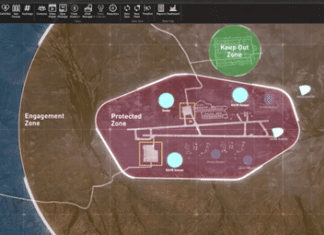This post is also available in:
 עברית (Hebrew)
עברית (Hebrew)
Researchers from North Carolina State University developed a mechanical computer prototype using polymer cubes, which was inspired by kirigami (a type of origami) and allows data to be locked in place or edited without using any electronic components.
The world of computing is worried about the excessive energy utilization from computing infrastructure, as the world leans more and more heavily on computational power. If cloud-based data storage was the main energy-draining concern in the past, the new AI-based applications are even more energy intensive, and they are showing no signs of slowing down any time soon.
Amidst these concerns, the idea of a mechanical computer that uses no electricity seems ideal – and the researchers from North Carolina State University had a revolutionary idea for making an easy to operate mechanical computer.
According to Interesting Engineering, the mechanical computer is made with 1 cm polymer cubes connected with thin strips of elastic tape designed with inspiration from kirigami – when a block is pushed up or down it changes the geometry of the interconnected tubes. 64 connected blocks are one functional unit.
The functional unit is a metastructure that stores data or allows for more complex computations. To edit data on the blocks, one has to pull along the edges of the metastructure, stretching the elastic tape and allowing for individual cubes to be moved. When the metastructure is released, the tape contracts, holding the cubes in place and locking the data.
Yanbin Li, a post-doctoral researcher at the university who was involved in the research, explains that “using a binary framework – where cubes are either up or down – a simple metastructure of 9 functional units has more than 362,000 possible configurations,” and adds that the information density is “quite good.”
Furthermore, the researchers also claim that this mechanical computer is not limited to binary system data processing – “We think there is potential here for more complex computing, with data being conveyed by how high a given cube has been pushed up,” explained associate professor of mechanical and aerospace engineering Jie Yin. “We’ve shown within this proof-of-concept system that cubes can have five or more different states. Theoretically, that means a given cube can convey not only a 1 or a 0 but also a 2, 3, or 4.”
This system could also be used for applications beyond computing, such as haptic systems that display information in a three-dimensional context rather than as pixels on a screen.
The research regarding this innovation was published in ‘Science Advances’.


























